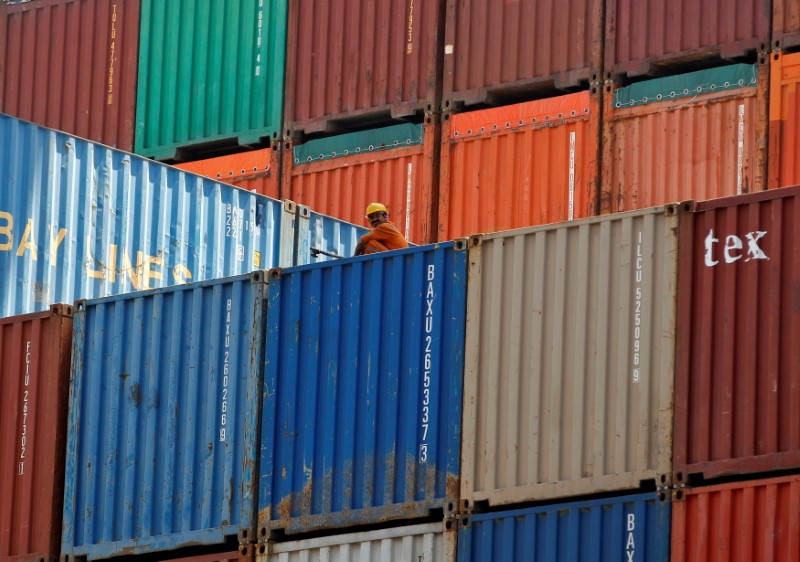By Swati Bhat
MUMBAI (Reuters) - India's current account deficit widened in the January-March quarter on the back of a higher trade deficit and lower net invisible receipts, the Reserve Bank of India said in a release on Wednesday.
The current account deficit stood at $8.1 billion in the January-March quarter compared to a surplus of $0.6 billion in the same quarter last year.
The deficit stood at 1% of gross domestic product in the latest quarter, RBI data showed.
"A normalisation in import demand as well as a surge in gold imports contributed to the widening of the current account deficit," said Aditi Nayar, chief economist at the rating agency ICRA.
Data earlier in June showed India's deficit in goods trade had widened to $6.28 billion in May from $3.15 billion in May 2020.
RBI said net external commercial borrowing had fallen to $6.1 billion in the January-March quarter compared with $9.4 billion a year earlier, but portfolio investments, mainly in the form of equity purchases, increased by $7.3 billion versus a decline of $13.7 billion.
Rupa Rege Nitsure, chief economist at L&T Financial Holdings, said the current account data was revealing.
"India needs to focus on improving the competitiveness of its exports to make its external balance position more sustainable," she said.
Boosting exports would also help to offset weakness in domestic demand stemming from the slowness of economic recovery from the effects of the coronavirus pandemic, she added.
A second wave of coronavirus infections is seen delaying economic recovery, while a rise in crude oil prices is also likely to hurt the economy. India imports over two-thirds of its oil.
For the full year 2020/21, which ended on March 31, India recorded a current account surplus of 0.9% of GDP, as against a deficit of 0.9% of GDP in 2019/20, on account of a sharp contraction in the trade deficit.
India moved to a current account surplus for the first time in over a decade in January-March 2020, and touched a record $19.2 billion in the April-June quarter.
During that period, the trade deficit narrowed due to the COVID-19 pandemic and a related drop in domestic economic activity.
The balance of payments showed a surplus of $3.4 billion in the fourth quarter of the financial year 2020/21, compared with a surplus of $18.8 billion the previous year.
Net foreign direct investment inflows increased marginally to $44 billion in 2020/21 but in the January-March quarter they stood at just $2.7 billion, well down from $12 billion a year earlier.

Nitsure said the decline in net FDI did not bode well and that India needed to become more attractive as a destination for long-term investments.
"With the widening state-level restrictions shrinking the domestic demand for fuels and gold in May 2021, we expect the current account to revert to a small, transient surplus in the ongoing quarter," said Aditi Nayar, chief economist rating agency ICRA.